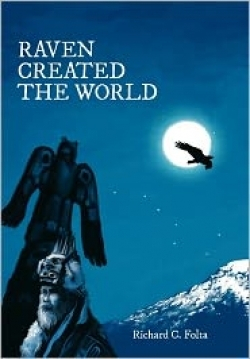
Raven Created the World
Resurgence of a Pre-Western Alaskan Culture
Alaska sometimes feels like a foreign country to residents of the lower forty-nine states. Alaskans grapple with extreme weather, rugged geography, and the sometimes difficult blending of modern cultures with neighboring Native peoples.
Kowak, a shaman of the Hooligan tribe in the Kaheen Village, knows too well the difficulties of maintaining a unified tribe in the face of geological disasters and the intrusion of white men who wish to profit off valuable Native artifacts. He also recognizes a deeper evil at work in his village—the vengeful spirit of Kooshdaa wak has risen and lodged himself in the body of Kowak’s nephew, Lap Lesco, and has begun to take his revenge by kidnapping children.
Kowak’s niece, Jona, works as hard as Kowak to save their people but operates via different channels. She works for lawyer Kyle Strum in a struggle against the state that wants to relocate the Hooligan tribe. The new area is supposed to be of the same quality as Kaheen village but fails to offer the same connection to deceased ancestors. It wouldn’t be home. Jona also tries to help her uncle locate her missing cousin, Lapsco, and encounters a different kind of evil in the form of the mob and business men with a taste for sexual assault.
As Kooshdaa wak’s strength grows and more children—and adults—disappear, Kowak, Jona and their friends find themselves in a fight for not only their history but for their own lives.
Richard C. Folta, a lawyer and writer living in Alaska, has a distinct grasp on the disruption native Americans face in a white world, both the emotional aspects and the logistics, and he does a good job immersing his characters in a fictitious struggle that well represents real-life struggles.
However, a few problems keep the book from reaching its full potential. In the second half of the book the plot speeds up, and major events, like an earthquake, a tsunami, and various physical assaults become compacted and blurred. Resolutions feel rushed. Some time could be shifted from the first half of the book, during which long swaths of time go by without critical updates on developing narrative lines, like the story of the children being held hostage by the spirit of the evil shaman. Another cause for dissonance is the jagged pattern of the narrative: on one page, readers are deep in a fast-paced manhunt, and on the next page they’re subjected to a lengthy, dry courtroom scene.
The dialogue rarely flows smoothly. Characters explain things stiffly to each other for the sake of imparting information and never fully come alive during interactions. Instead of reacting naturally to circumstances, characters behave in forced ways which do not inspire empathy in readers.
Despite a few textual problems, Folta writes with knowledge and concern about Alaskan natives, and may find more success in subsequent novels.
Reviewed by
Andi Diehn
Disclosure: This article is not an endorsement, but a review. The publisher of this book provided free copies of the book and paid a small fee to have their book reviewed by a professional reviewer. Foreword Reviews and Clarion Reviews make no guarantee that the publisher will receive a positive review. Foreword Magazine, Inc. is disclosing this in accordance with the Federal Trade Commission’s 16 CFR, Part 255.
